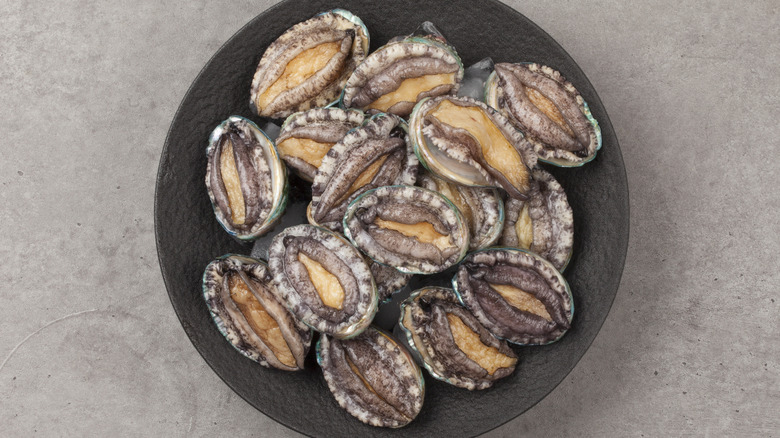This Once-Popular Seafood Has Pretty Much Vanished From The US
Though they have been eaten, utilized, and honored in Japanese, Chinese, and Native American cultures since prehistoric times, during the 1950s through the 1970s, abalone poaching was a common practice in the United States. The sea snails, with their chewy but tender meat, were not only a culinary delicacy, but their shell was a popular material of that era. Lined with the iridescent Mother of Pearl, the shell has been used to make jewelry, wall art, vases, hair accessories, buttons, and myriad home decor. In Traditional Chinese Medicine — an ancient medical system still used today — abalone shells are used to treat ailments affecting the eyes. Sought after as food, medicine, and decoration, some species of the mollusk were ravaged by human consumption and over-harvested to the point of near extinction. In 1900, regulations on commercial fishing were required to preserve the abalone population.
Despite the fact that abalone fishing is now heavily regulated, these mollusks still face challenges when it comes to repopulation. Abalone take several years to reach sexual maturity, which makes reproduction a slower process. This scarcity has turned abalone into a rare delicacy and significantly raised asking prices — though they can be found at Costco in Korea.
Don't forget about labor costs
The rarity of sustainably caught abalone isn't the only thing that makes them so expensive. While keeping the shell intact may not be of paramount importance when it's being used for food or medicine, when the colorful shell is being incorporated into jewelry or home decor, it is often the aim that the shells remain intact. Fishing machinery often shatters the delicate shells, so folks who are authorized to harvest abalone must use other methods. They are typically hand-caught by skilled fishermen who can effectively navigate the rough waves of the rocky coves and coastlines where abalone are found. Abalone fishing is tough work, as the mollusks are often firmly planted to rocks via their suction cup-like feet. It takes dextrous manual labor to obtain abalone. Labor-intensive harvesting is a common reason why some of the world's most expensive ingredients cost so much.
Those fishing for abalone must know the size requirements for harvesting these sea snails, or risk getting slapped with hefty fines. In part, legally-enforced size requirements were set to allow time for the abalone to reach reproductive age. In Japan, most free-dive abalone fishing is performed by women known as the "ama." This long-held tradition has been linked to an ancient spiritual practice in which abalone are presented as offerings to supernatural beings.

